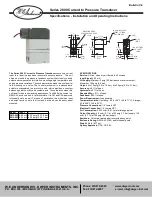
6
SD CARD/USB FLASH DRIVE
1
2
3
4
5
6
7
8
9
10
11
12
13
14
15
16
17
18
19
20
21
6-1
Saving data
SD card, SDHC card, and USB flash drive are not
supplied by Icom. They are user supplied.
You can use an SD card of up to 2 GB, or an SDHC of
up to 32 GB. Icom has checked the compatibility with
the following SD and SDHC cards.
(As of September 2017)
Brand
Type
Memory size
SanDisk
®
SD
2 GB
SDHC
4 GB
8 GB
16 GB
32 GB
L
The above list does not guarantee the card’s
performance.
L
Throughout the rest of this document, the SD card
and SDHC card are simply called the SD card or the
card.
TIP:
Icom recommends that you save the transceiver’s
factory default data for backup.
NOTE:
•
Before using the SD card or USB flash drive, thoroughly
read the their instructions.
•
If any of the following occur, the card data or flash drive
data may be corrupted or deleted.
- You remove the card or flash drive from the transceiver
while they are being accessed.
- A power failure occurs or the power cable is
disconnected while the they are being accessed.
- You drop, impact or vibrate the card or flash drive.
•
Do not touch the contacts of the card or flash drive.
•
The transceiver takes a longer time to recognize a high
capacity card or flash drive.
•
The card or USB flash drive has a certain lifetime, so
data reading or writing may not be possible after using it
for a long period of time.
When reading or writing data is impossible, the card or
flash drive’s lifetime may have ended. In that case, use a
new one.
We recommend that you make a separate backup file of
the important data onto your PC.
•
Icom will not be responsible for any damage caused by
data corruption on a card or USB flash drive.
You can save the following data onto the card or USB
flash drive.
SD Card
•
Data settings and Memory channel contents of the
transceiver
•
Communication log and contents
•
Voice audio for the Voice TX function
•
RTTY and PSK decode log
•
Captured screens
USB flash drive
•
Data settings and Memory channel contents of the
transceiver
•
Captured screens
Inserting
Insert the SD card or USB flash drive as shown below.
L
Insert the SD card into the slot until it locks in place, and
makes a ‘click’ sound.
L
Be sure to check the card or flash drive orientation before
inserting.
NOTE:
Before using an SD card or USB flash drive
with the transceiver for the first time, be sure to
format all SD cards or USB flash drive
•
Formatting a card or flash drive erases all its data.
•
Before formatting any used card or flash drive, back up
its data onto your PC.
•
After inserting or formatting, a special folder on the card
or flash drive that you need for operations like updating
the firmware are created on the card or flash drive.
IMPORTANT:
Even if you have formatted an SD
card, some data may remain in the card. When you
dispose the card, be sure to physically destroy it to
avoid unauthorized access to any data that remains.
About the
SD cards
About the USB flash drive
Use the USB flash drive that supports the interface
1.1 or 2.0.
L
These do not guarantee the USB flash drive’s
performance.
LOCK
SD
Lights blue
USB flash drive
•
“ USB” is displayed on the screen.
SD card
Beveled corner
















































